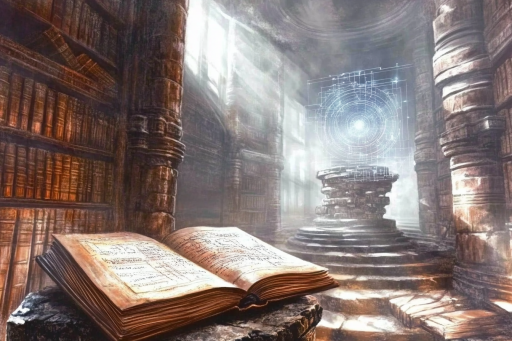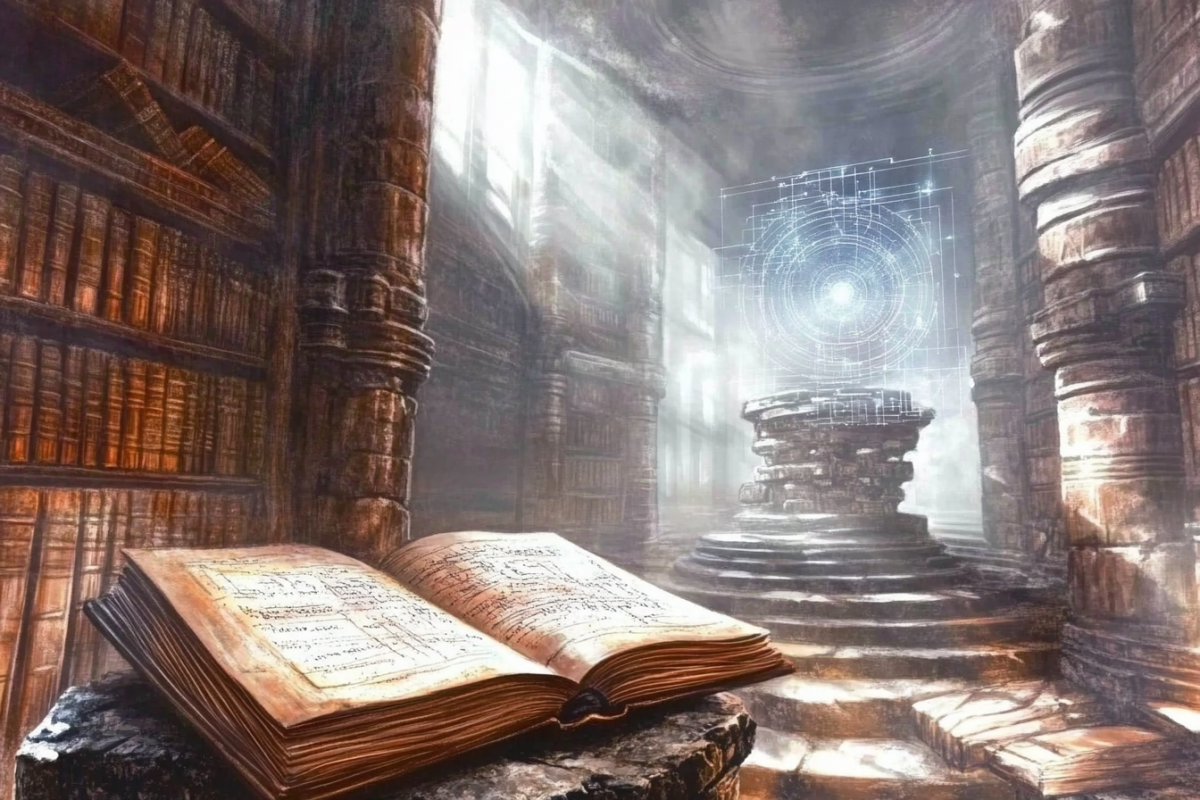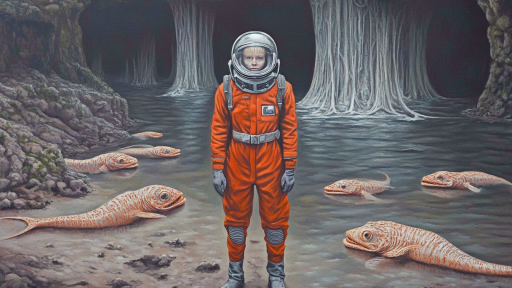
Throughout history, ancient texts have recorded ideas, visions, and technologies that seem eerily ahead of their time. From flying machines to complex computers, some manuscripts describe devices and discoveries that wouldn’t become reality until centuries—or even millennia—later. Were these merely imaginative speculations, lost knowledge from forgotten civilizations, or something more mysterious? As we examine these extraordinary writings, the question remains: how did the past foresee the world of today with such unsettling precision?
The Vaimānika Śāstra: Descriptions of Aircraft

An ancient Sanskrit text, the Vaimānika Śāstra, describes flying machines known as vimanas in stunning technical detail. These crafts were said to be capable of intercontinental travel, powered by unknown energy sources, and maneuvered with precision rivaling modern aircraft. While some scholars dismiss it as mythology, the striking similarities to modern aviation technology raise intriguing questions. Did early civilizations have knowledge of flight long before the Wright brothers?
The Codex Leicester: Da Vinci’s Sketches of Submarines

Leonardo da Vinci’s Codex Leicester contains detailed diagrams of underwater breathing apparatuses and submersible vessels. Though submarines wouldn’t become practical for centuries, his sketches outline concepts that modern engineers would later refine. His designs, often dismissed as impossible at the time, eerily predict the mechanics of deep-sea exploration. Was he simply ahead of his era, or was he tapping into knowledge long forgotten?
The Sibiu Manuscript: Multi-Stage Rockets

Dating back to the 16th century, the Sibiu Manuscript describes multi-stage rockets with a level of detail that predates modern rocketry by centuries. It outlines fuel mixtures, propulsion techniques, and even launch strategies resembling those used in space exploration today. Historians credit Konstantin Tsiolkovsky and Wernher von Braun with pioneering rocket science, but this manuscript suggests that visionaries from the past may have paved the way first.
The Ripley Scroll: Alchemical Predictions of Genetic Engineering

An enigmatic 15th-century alchemical text, the Ripley Scroll speaks of the “Philosopher’s Egg” and the transformation of life at a fundamental level. Some believe its cryptic language describes processes akin to DNA manipulation and genetic engineering. While dismissed as metaphors by skeptics, the detailed descriptions of altering biological matter strangely parallel modern biotechnological advancements. Could alchemists have glimpsed a future where humans wield control over life’s blueprint?
The Taoist Canons: Mechanical Beings and Robots

Ancient Chinese Taoist texts mention self-operating mechanical beings, some described as humanoid constructs capable of movement and even simple thought. These ideas sound remarkably similar to today’s robotics and artificial intelligence. Some historical records even describe Emperor Mu of the Zhou Dynasty encountering a robotic automaton. Were these just stories, or did ancient engineers already conceive the machines that power our modern world?
The Book of Soyga: Encrypted Knowledge of Artificial Intelligence

The Book of Soyga, a 16th-century encrypted manuscript, contains a mysterious code that has baffled scholars for centuries. Some believe its intricate symbols and sequences resemble the logic structures used in modern computing and artificial intelligence. When decoded, could this book contain the foundation for knowledge that led to machine learning? Its origins remain a mystery, but its complex patterns suggest an intelligence ahead of its time.
The Antikythera Mechanism: The World’s First Computer

Discovered in an ancient shipwreck, the Antikythera Mechanism is an intricate system of gears and dials capable of predicting celestial movements with astonishing accuracy. Built over 2,000 years ago, it operates on the same principles as modern analog computers. How did ancient Greek engineers create a device so advanced that it wouldn’t be replicated until centuries later? The more we study it, the more it challenges our understanding of ancient technology.
The Voynich Manuscript: A Guide to Unknown Medicine

One of the world’s most famous unreadable books, the Voynich Manuscript contains elaborate illustrations of plants, celestial charts, and what appear to be medical procedures. Some researchers believe it could describe unknown herbal remedies, possibly even cures for diseases that modern science has yet to rediscover. Its language remains undeciphered, but its images hint at a knowledge that feels both lost and eerily relevant to modern medicine.
The Zohar: Early Descriptions of Quantum Mechanics

The Zohar, a 13th-century Jewish mystical text, contains descriptions of multiple realities, wave-particle duality, and energy fields that some physicists say bear a striking resemblance to modern quantum mechanics. While traditionally seen as a spiritual book, its insights into the fundamental nature of reality sound remarkably like concepts only now being explored in advanced physics. Was this ancient wisdom, or did it touch on truths science has only recently begun to uncover?
The Popol Vuh: Ancient Knowledge of Human Cloning

The Popol Vuh, a sacred Mayan text, speaks of gods creating multiple versions of human beings before arriving at the final form. These accounts eerily resemble modern cloning and genetic modification theories. The descriptions of “failed creations” sound like experiments that would later be conducted in labs across the world. Could this text be a symbolic myth, or does it preserve knowledge of an advanced science that existed in the distant past?
The Sulba Sutras: Precise Mathematical Formulas for Space Travel

Ancient Indian texts known as the Sulba Sutras contain detailed mathematical equations for constructing altars—but modern analysts have noted that these equations closely resemble calculations used in modern physics and aerospace engineering. Some of their geometric formulas are so advanced that they align with theories later used in space travel. Did early mathematicians unknowingly lay the foundation for interplanetary exploration?
Echoes of the Future in the Past

How could civilizations that lacked modern tools describe machines, medicine, and scientific principles that wouldn’t be developed for centuries? Were these brilliant minds simply ahead of their time, or do these manuscripts hint at something more—a cycle of lost knowledge, rediscovery, and perhaps even glimpses of the future? As we continue to uncover new mysteries in ancient texts, we must ask: are we truly inventing, or merely remembering?





